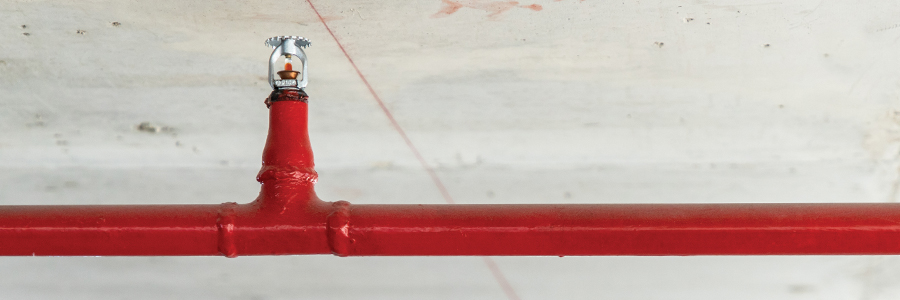
Is a Dry System or an Antifreeze System Best for You?
It’s been 10 years since NFPA guidelines specified that site-mixed, unlisted antifreeze was no longer an approved option for wet systems. Because a listed alternative wasn’t yet widely available, new systems were almost exclusively designed as a dry system.
But now there is a true choice between two system types. Both are an acceptable alternative to continuing to operate an antifreeze system with legacy antifreeze, and when correctly installed, both have similar reliable performance in a fire.
With equivalent life-saving potential but different associated costs, it’s important not to just default to dry systems as a known quality. Choosing a dry system or an antifreeze system depends on your system’s size and requirements and on your budget.
Differences: System Requirements
System requirements should always be the top consideration when designing or retrofitting a system. Neither dry nor antifreeze systems should ever be used outside their listings or approved applications. For example, airport hangars must always use a foam system, due to the volatile nature of jet fuel; neither a dry system nor an antifreeze system is appropriate in this application.
But in cases where either a dry or a wet system may be appropriate, it’s worthwhile to do the research to determine the best type for your system’s requirements. A wet system with UL listed freezemaster™ antifreeze installed has a wide range of on-list usage including:
- Temperature ranges from -12°F to 150°F (-24°C to 66°C).
- Per NFPA 13D design criteria (≤500 gallons).
- Per NFPA 13R design criteria (≤500 gallons).
- NFPA 13 – Light Hazard design criteria (≤200 gallons) or >200 gal to ≤500 gal in accordance with NFPA 13 using the dry system hydraulic design criteria, where the system hydraulics are designed as a dry system even though the system is filled with antifreeze.
- NFPA 13 – Ordinary Hazard Groups I & II design criteria (≤40 gallons) or >40 gal to ≤375 gal in accordance with NFPA 13 using the dry system hydraulic design criteria, where the system hydraulics are designed as a dry system even though the system is filled with antifreeze.
Retrofit costs are also an important consideration. Antifreeze sprinkler systems installed prior to the 2012 NFPA 25 decision must choose whether to maintain an antifreeze system or to switch to a dry design. Both changes will require some retrofits to ensure proper performance. Depending on the application (such as a small vestibule or overhang), the costs to convert an antifreeze system to a dry system can far outweigh the benefits. Instead, an already valved-off legacy antifreeze system would only incur costs to add an expansion tank and to drain and refill the system with new, listed antifreeze. Because a listed antifreeze like freezemaster™ antifreeze can remain in good working condition for many years when installed and tested properly, these costs are often much lower year-over-year than converting to a dry system.
Differences: Maintenance Costs
Even in cases where retrofit costs are nearly equal between the two, maintaining an antifreeze system is much more cost-effective than maintaining a dry system. Dry systems incur annual costs for special equipment and yearly maintenance including low-point drains, valve interior inspection, trip testing and more.
Antifreeze systems using a listed product like freezemaster™ antifreeze must do an annual backflow inspection and little more each year. Purchasing a listed antifreeze product represents the bulk of maintenance costs, but properly installed freezemaster™ antifreeze in a properly retrofitted system can last a few years at least and slash these costs significantly.
Make the Best Choice for Your System
Now that you actually can make a choice between a dry and a wet fire sprinkler system, evaluate your system carefully to determine the best option for your building or facility. A dry system may still be the best option for you, but now that antifreeze systems are back on the table and are backed by high-quality products like freezemaster™ antifreeze, you owe it to yourself and your system to choose the best system type for your needs.
Get answers to freezemaster™ antifreeze FAQs to help the decision-making process or contact us to discuss your questions.

